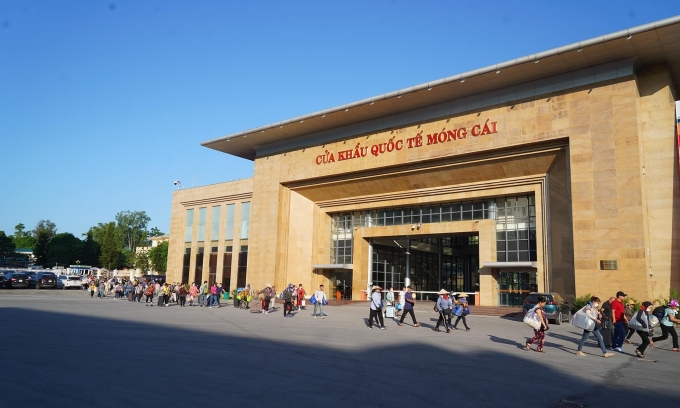
People walk at Mong Cai border gate in Quang Ninh Province. Photo by VnExpress/Le Tan
Vietnam and China are set to resume their self-driving tours at border areas beginning late this month after more than three years of suspension due to Covid.
Starting October 30, Vietnamese tourists will be allowed drive their cars through the Mong Cai border gate in the northern province of Quang Ninh to reach Nanning City in China, while Chinese visitors will be able to drive to Ha Long in Vietnam.
Nanning, around 600 kilometers from Mong Cai, is the capital of Guangxi Zhuang Autonomous Region in south-west China while Ha Long, about 150 kilometers from Mong Cai, is home to a world heritage bay.
This is part of an agreement between Vietnamese and Chinese authorities to boost tourism recovery as China used to be Vietnam's biggest feeder tourism market before the pandemic.
There is currently no specific information about the number of vehicles that may benefit from the program, nor have any details been released on how it will be implemented
In 2016, Vietnam and China started piloting self-driving car tours in their border areas but the tours were only allowed to run between Quang Ninh's Mong Cai City and China's Dongxing City at that time.
After one year of implementation, 93 cars with 256 tourists from China arrived in Mong Cai City. In the opposite direction, 38 cars with 110 visitors from Vietnam drove to Dongxing City.
Until 2018, the Vietnamese government allowed Quang Ninh to expand its self-driving tour to Ha Long while the Chinese authorities also let Vietnamese tourists to drive their cars to Guilin City.
Following the outbreak of Covid-19, self-driving car tours were halted.
In the first nine months of this year, Vietnam received over 1.1 million Chinese tourists. Although that made China the second largest market of Vietnam tourism after South Korea, the number was only 28% of pre-pandemic levels.














